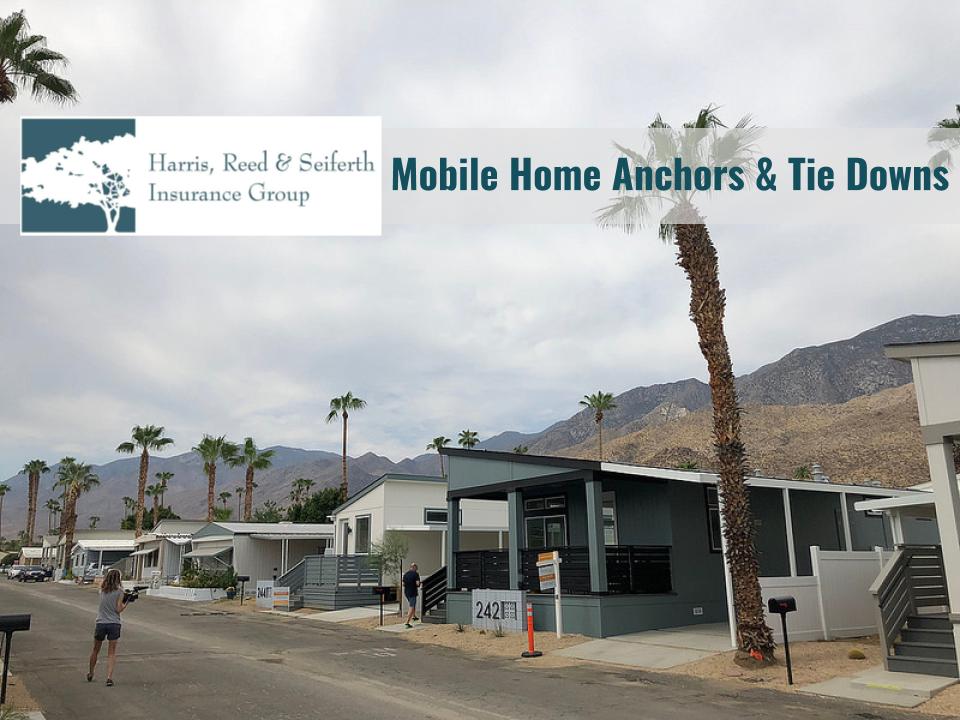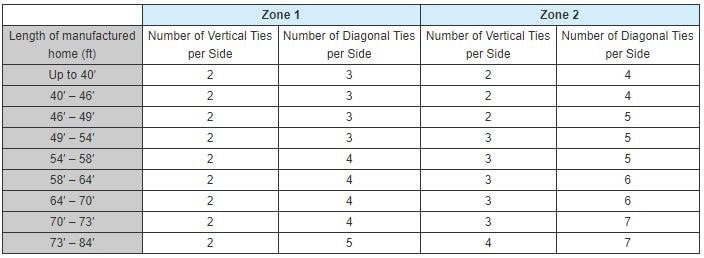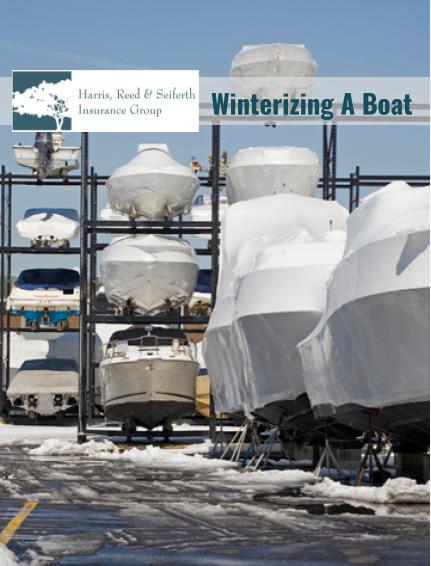Harris, Reed & Seiferth
|
|
When strong winds blow, manufactured homes need special protection. No matter where you live, you need tie-downs and anchors to keep your manufactured home stable and secure. Before you start the job, you should understand why this wind protection system is necessary, and know the basic requirements for tie-downs and anchors. You also need to become familiar with all the components that make up your anchoring system. It's a good idea to consult with an experienced professional installer or building inspector if you have any questions or doubts about the installation.
Why Mobile Home Tie-Downs?
Manufactured homes must have anchors and tie-downs to keep them in place during high winds. Compared to site-built homes, manufactured homes are relatively lightweight. They have flat sides and ends, and they are built on frames rather than foundations. Almost all manufactured homes are elevated, situated on top of some sort of pier or foundation system. Wind can get under the homes and lift them up. In addition, the wind passing over the top of your manufactured home can create an uplift force. To resist wind forces, you need two different types of tie-downs. In older homes, a vertical or over-the-top tie-down is needed to compensate for the uplift force. A diagonal or frame tie-down is needed to compensate for both lateral and uplift forces. Singlewide manufactured homes need both types of tie-downs. Doublewide homes only need the diagonal ties.
Tie Down Requirements For Manufactured Homes
• Singlewide manufactured homes require both diagonal and vertical ties. • Doublewide manufactured homes require only diagonal ties. Length of manufactured home (ft)Number of Vertical Ties per SideNumber of Diagonal Ties per SideNumber of Vertical Ties per SideNumber of Diagonal Ties per Side • To determine the length, do not include the draw bar. • Numbers based on minimum working load per anchor of 3,150 pounds, with a 50% overload of 4,725 pounds. • Diagonal ties must deviate at least 40 degrees from a vertical direction. • If your home has special site considerations, a registered professional engineer or architect can devise an alternate anchoring system. Anchoring System Components
Tie-Down And Anchor Installation
Installing a tie-down and anchoring system is not too complicated for most do-it-yourselfers. It's wise, however, to seek experienced help to make sure you are using the proper anchor for your soil conditions, enough anchors for your wind conditions, the correct tension on your tie-down, and proper angle for your frame tie-downs. At the very least you should have a building inspector or a trained installer check over your finished work.
To make sure you're tied down safely, consult your local building inspector. Looking for Mobile Home insurance? In addition to following the proper steps to tie-down and anchor your mobile home, make sure you have a good mobile home insurance policy in case the unexpected happens. Source: Foremost Insurance - Mobile Home Repair - How to Install Tie Downs And Anchors
0 Comments
During a freeze, fresh water that has not been flushed out of a boat can cause major damage. Water left in pipes, plumbing lines, holding lines, sewage tanks or the engine has the potential to freeze and expand causing, potentially, thousands of dollars worth of damage to a boat. A cracked engine from lack of winterization can be very costly. Even more, if you didn't take the time to winterize your boat, those damages may not be covered under your boat insurance policy. That's why it's so important to take some time to winterize your boat. An hour of prevention could save you thousands of dollars and one big headache.
Best Time To Winterize A Boat The best time to winterize your boat is when you've decided your boating season is over. For locations that have timely seasons it may be easy to figure out what time of year that is. In the Great Lakes region, for example, many boaters target Labor Day weekend as the right time to take their boat out of the water before the cold weather hits. For states like Texas, California or Florida that don't have a typical winter season, deciding when to winterize your boat can be a little harder. In fact, it's in these states that damage due to lack of winterization occurs the most. How can you winterize if there is no winter? Winterization is really nothing more that following proper storage procedures. Whether a location has a typical winter or not, you should know how to properly store your boat because even a state like Texas can be hit with cold weather. Who Is Typically Affected? According to Glenn Sladek, general claims adjuster for Farmers Insurance, boaters that live in a region that doesn't have a typical winter are the ones that need to be informed of proper boat winterization techniques. "The people that typically get burned are the people that don't have consistent winters. The weatherman says there's going to be a freeze, and unfortunately some people don't take any action to protect their boat. By the time the freeze occurs, the damage is done," says Sladek. With 21 years of marine claim experience under his belt he has seen a plethora of damages associated with not winterizing boats. Sladek continues, "Winterization should only take an hour for boats under 26 feet and towed on a trailer. If you don't know how, any marine facility or dealer should be able to help you, but it's really not that hard to do." Follow The Steps Below To Winterize A Boat
Looking For Boat Insurance? In addition to following the proper steps to winterize your boat, make sure you have a good boat insurance policy in case the unexpected happens. Learn about our Marine Choice® packages. Source: Foremost Insurance - On The Water - Winterizing Your Boat |
Categories
All
Archives
May 2024
|
Social MediaContact UsNavigation |
|
Website by InsuranceSplash
Privacy Policy | Terms of Use
© 2025 by HARRIS, REED & SEIFERTH INSURANCE GROUP, INC. All rights reserved.
© 2025 by HARRIS, REED & SEIFERTH INSURANCE GROUP, INC. All rights reserved.




 RSS Feed
RSS Feed